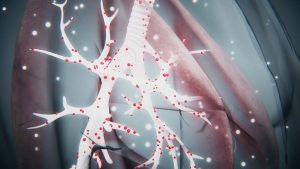At the world’s first COVID-19 conference, a one-day gathering held virtually on Friday, Dr. Anthony Fauci summarized the latest science on the new virus. As director of the National Institutes of Allergy and Infectious Disease, he oversees the nation’s extensive research into this unique pathogen, and its impact on health.
This is what he told us:
When it started: There is evidence of person-to-person transmission “weeks before” a cluster of cases was detected at a Wuhan market in late December of 2019.
How it spreads: There are still just two major routes of transmission. The most efficient is respiratory droplets. Less common, but real, are infected surfaces. While there is new evidence of ‘aerosolized’ transmission, with the virus disseminated and suspended through light particles in the air, the precise role of this route is unclear.
Pets: Yes, domesticated animals have been infected. But this has not been shown to be a major source of human infection.
Asymptomatic cases: We’ve known all along that some infected people don’t get sick. But new evidence shows that a stunning 40 to 45% of infected people never show symptoms. This is significantly complicating our control efforts.
Incubation period: You can develop symptoms any time between two to 14 days from infection. But most symptoms appear around four to five days.
Symptoms: It starts off, in many cases, like the flu. But that can be misleading, because some patients never develop a fever. Typical symptoms are cough, fatigue, anorexia and shortness of breath. The most unusual symptom is loss of smell and taste, which can precedes the onset of respiratory symptoms.
Death rate: Data from early in the pandemic overestimated how deadly the virus was, and then later analyses underestimated its lethality. Now an estimated 10 people will die for every 1,000 people with COVID-19 — a case fatality rate of somewhere around 1%.
What puts you at risk of severe illness: Older age. chronic kidney disease, chronic obstructive pulmonary disease, an immunocompromised state due to organ transplant, obesity, serious heart conditions, sickle cell disease and Type 2 diabetes.
What might boost your risk: asthma, cerebrovascular disease, hypertension, pregnancy, smoking, use of immunosuppressive medications like steroids, bone marrow transplant, HIV, inherited metabolic disorders, neurologic conditions, liver disease, Type 1 diabetes, thalassemia.
Minorities are disproportionately affected: The age-adjusted hospitalization rates per 100,000 population for Native Americans is 261; Blacks, 213; Latinos, 205; Asians, 58 and whites, 46.
Complications other than lung failure: Neurological disease, hyperinflammation, cardiac dysfunction, acute kidney injury and “multisystem inflammatory syndrome in children.”
Expanding therapeutic landscape: New investigational treatments are emerging. They fall into two broad categories: antivirals, which target the virus directly, and so-called “host modifiers” and immune-based therapies, which influence the immune response to the virus or target the virus.
Two drugs now in use: The antiviral drug remdesivir offered patients a 32% faster time to recovery than those who received placebo and a possible survival benefit. The immune-based drug dexamethasone reduced 28-day mortality by 35% in ventilated patients and 20% in other patients receiving oxygen, but it did not help patients who did not require respiratory support. Clinical guidelines are posted online — covid19treatmentguidelines.nih.gov — and updated often as new data are published in peer-reviewed scientific literature and other authoritative sources.
Vaccines: There will be multiple candidates, using multiple platforms. Think hockey, with “multiple shots on goal, with hopefully more than one success.” Calling himself “cautiously optimistic,” Fauci said vaccine development is enlisting different strategies. “Some that you can ramp up quickly and some require more experience. Some… are tried and true. So all of these things are going on, in various stages of phases of trials.”



















